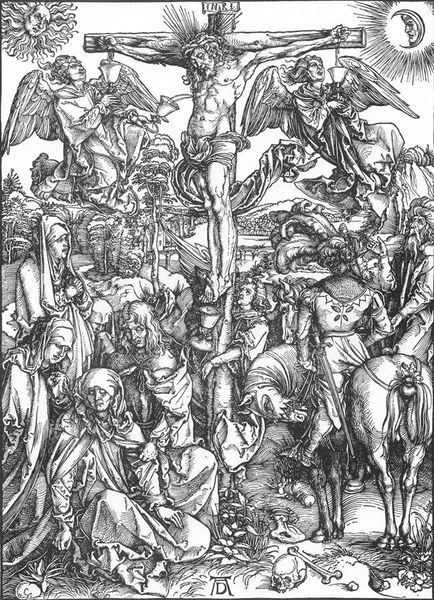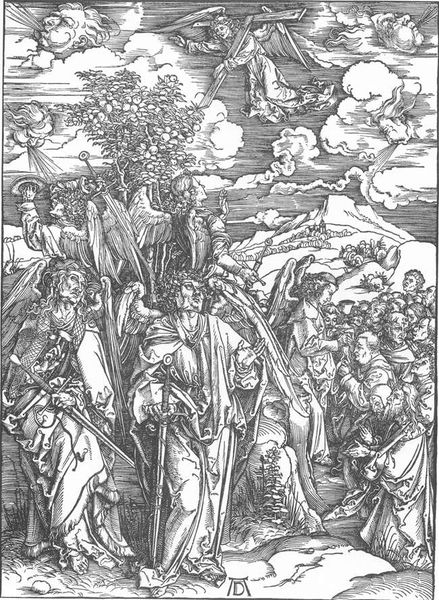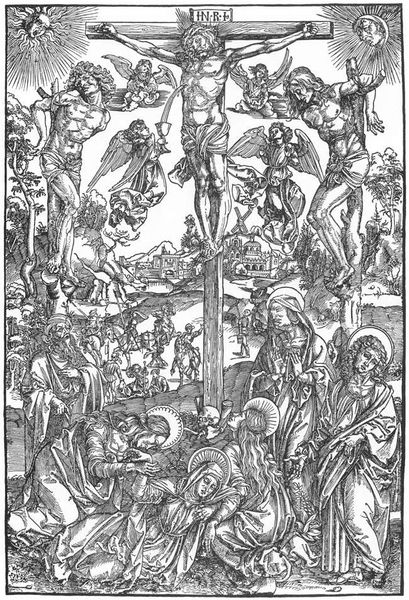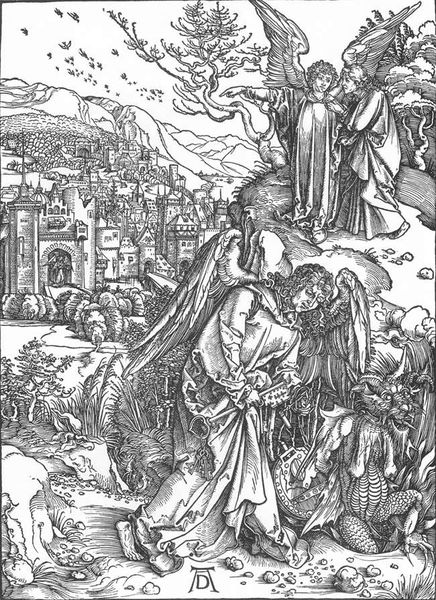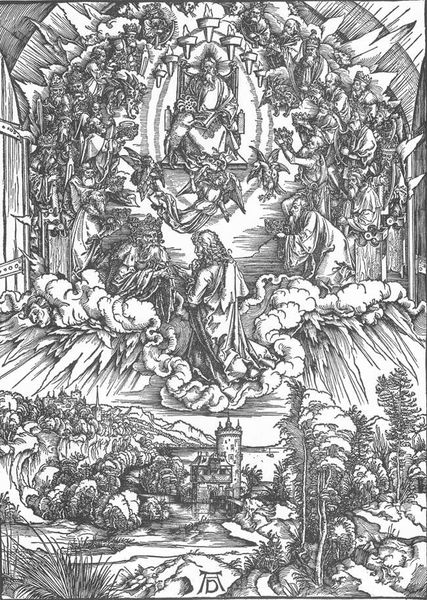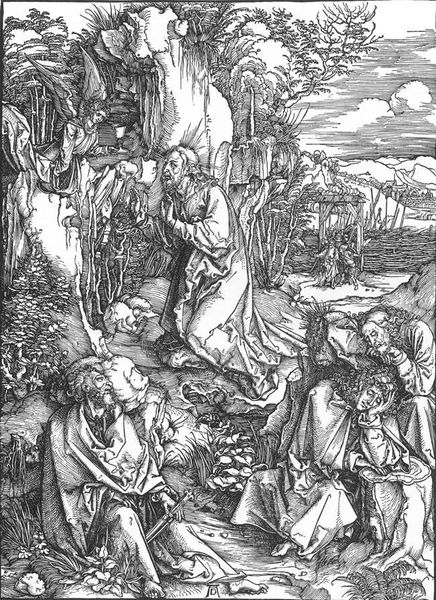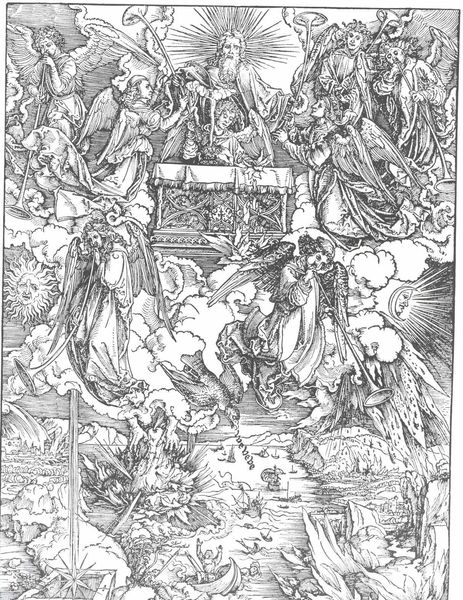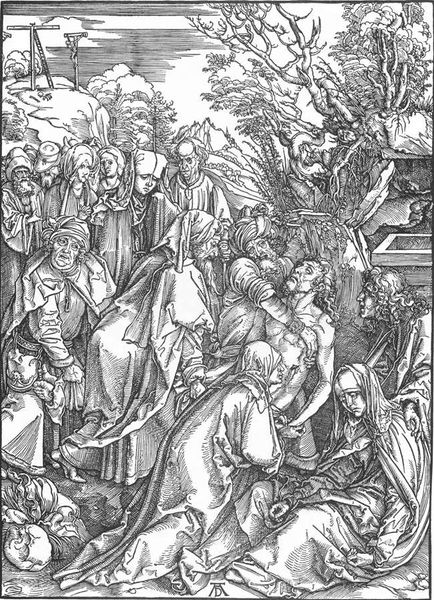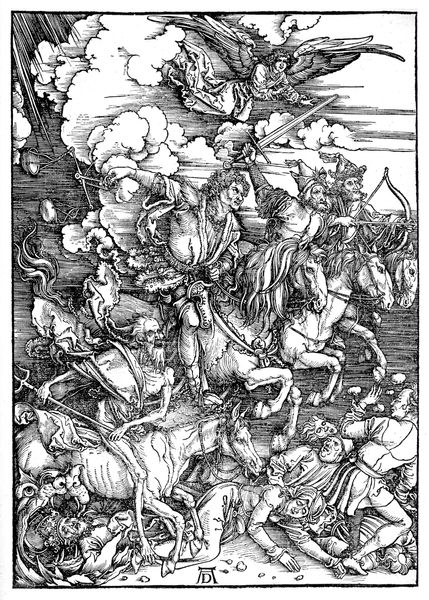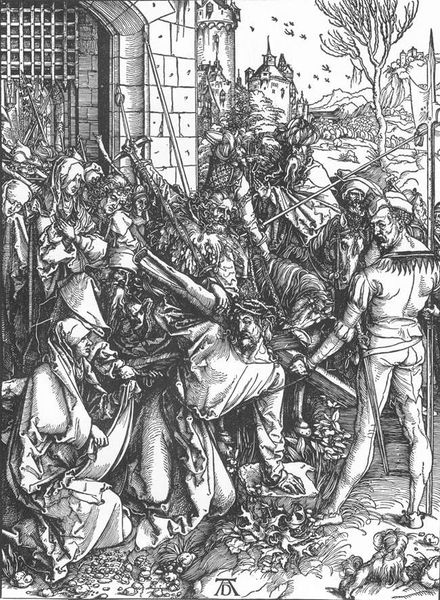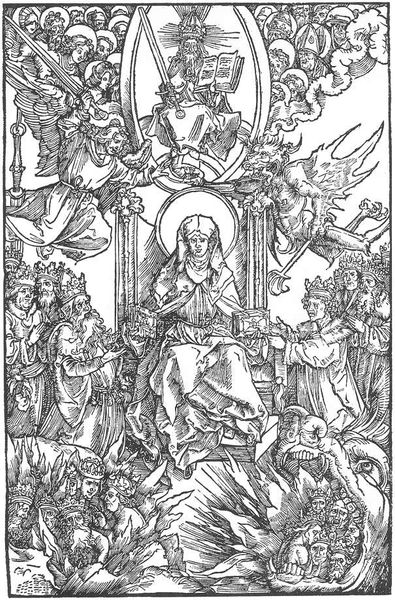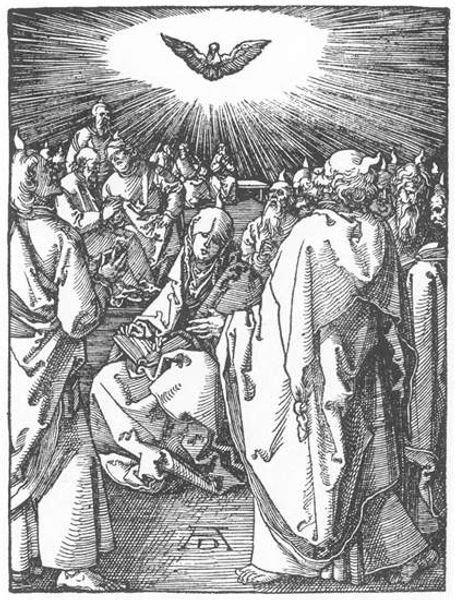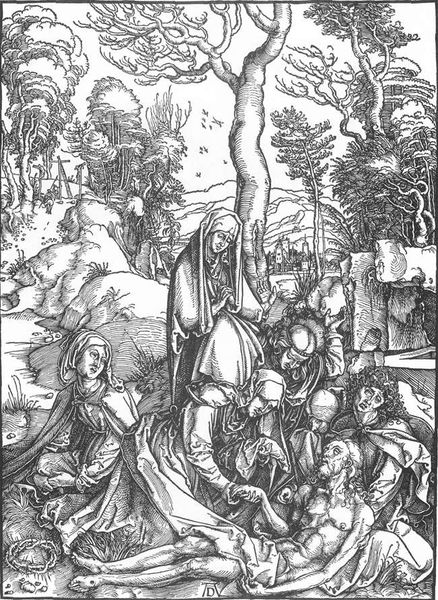
The Adoration of the Lamb and the Hymn of the Chosen 1498
0:00
0:00
print, woodcut, engraving
#
allegory
# print
#
figuration
#
woodcut
#
line
#
history-painting
#
northern-renaissance
#
engraving
Copyright: Public domain
Curator: Before us, we have Albrecht Dürer’s woodcut, “The Adoration of the Lamb and the Hymn of the Chosen,” created around 1498. It is currently held in the Staatliche Kunsthalle Karlsruhe. Editor: My initial response is a feeling of intensity—an almost overwhelming press of figures all directed upward. The lines are incredibly intricate and tightly packed, giving it a striking visual texture. Curator: Indeed. Dürer masterfully utilizes line, but it is clear he intends much more. This image is deeply embedded within Christian iconography; the lamb at the apex symbolizes Christ, the Lamb of God, representing sacrifice and redemption. It is an apocalyptic scene teeming with symbolic depth. Editor: Absolutely, and look at how the crowd's upward gaze leads us directly to the radiant lamb, drawing on established codes for the sacred. Even the angels flanking the lamb contribute to its powerful and uplifting affect. Also, that collection of angelic musicians: what instruments are those? It could be worthwhile researching their ties to liturgical traditions of the day. Curator: Notice how Dürer uses perspective, or perhaps purposefully avoids it? The multitude seems to rise without diminishing in scale, amplifying the divine vision’s magnitude. Editor: Quite right, Durer does make sure the adoration, by the people on Earth and by the blessed angels above, is presented without conventional perspectival cues. The absence lends the composition a dreamlike and almost transcendent quality, echoing, perhaps, a departure from physical constraints and the pull of earthly concerns. The print’s material execution seems relevant too. The medium of the woodcut itself lends a stark graphic quality that underscores this drama. Curator: A fair assessment. The medium allows the line to be powerfully declarative. Editor: By imbuing those figures in such highly legible symbols of veneration, what emotions do you suppose Durer wants us, the viewers, to experience in looking at this allegorical image? Curator: If Durer wants us to understand the sacrifice that the Lamb of God makes, and all that would follow from such a holy, important event, and even reflect on it...he has more than met his mark. This image carries an impressive depth that should, if we have done our work, lead you into an appreciative silence. Editor: Well said. For me, studying Durer’s strategic blend of texture and symbolically potent religious content reminds me of the enduring power of icons, a concept relevant from the Renaissance all the way to our image-saturated moment today.
Comments
No comments
Be the first to comment and join the conversation on the ultimate creative platform.
